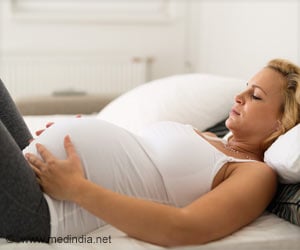A new study has confirmed what many mums already believed: their babies are a lot smarter than others may realize.
A new study has confirmed what many mums already believed: their babies are a lot smarter than others may realize.
Although the Northwestern University study was only five months old, it established that babies are amazing little experimenters with innate knowledge.The study's cuties indicated through their curious stares that they could differentiate water in a glass from solid blue material that looked very much like water in a similar glass.
"Rather, our research shows that babies are amazing little experimenters with innate knowledge. They're collecting data all the time," Susan Hespos said.
Hespos, an assistant professor of psychology at Northwestern, is lead author of the study, which will appear in the May 2009 issue of Psychological Science, a journal of the Association for Psychological Science.
In a test with one group of infants in the study, a researcher tilted a glass filled with blue water back and forth to emphasize the physical characteristics of the substance inside. Another group of babies looked at a glass filled with a blue solid resembling water, which also was moved back and forth to demonstrate its physical properties.
Next all the infants were presented with test trials that alternated between the liquid or solid being transferred between two glasses.
Advertisement
The infants who in their first trials observed the blue water in the glass looked significantly longer at the blue solid, compared to the liquid test trials. The longer stares indicated the babies were having an "Aha!" moment, noticing the solid substance's difference from the liquid. The infants who in their first trials observed the blue solid in the glass showed the opposite pattern. They looked longer at the liquid, compared to the solid test trials.
Advertisement
The five-month-old infants were able to discriminate a solid from a similar-looking liquid based on movement cues, or on how the substances poured or tumbled out of upended glasses.
In a second experiment, the babies also first saw either liquid or a similar-looking solid in a glass that was tipped back and forth. This time, both groups of infants next witnessed test trials in which a cylindrical pipe was lowered into either the liquid-filled glass or the solid-containing glass.
The outcomes were similar to those of the previous experiment. Infants who first observed the glass with the liquid looked longer in the subsequent test when the pipe was lowered onto the solid. Likewise, the infants who looked at the solid in their first trials stared longer when later the pipe was lowered into the liquid.
The motion cues led to distinct expectations about whether an object would pass through or remain on top of the liquid or solid, the Northwestern researchers noted.
Source-ANI
LIN








